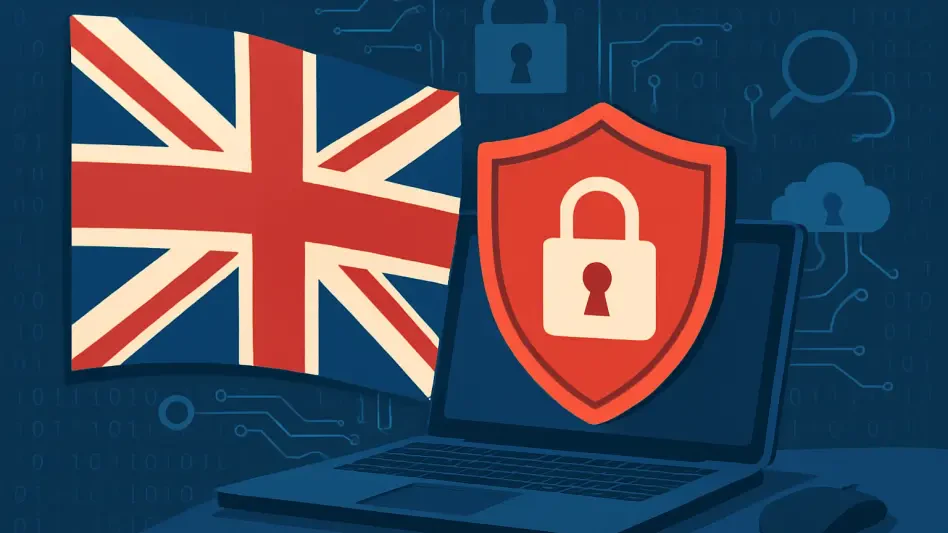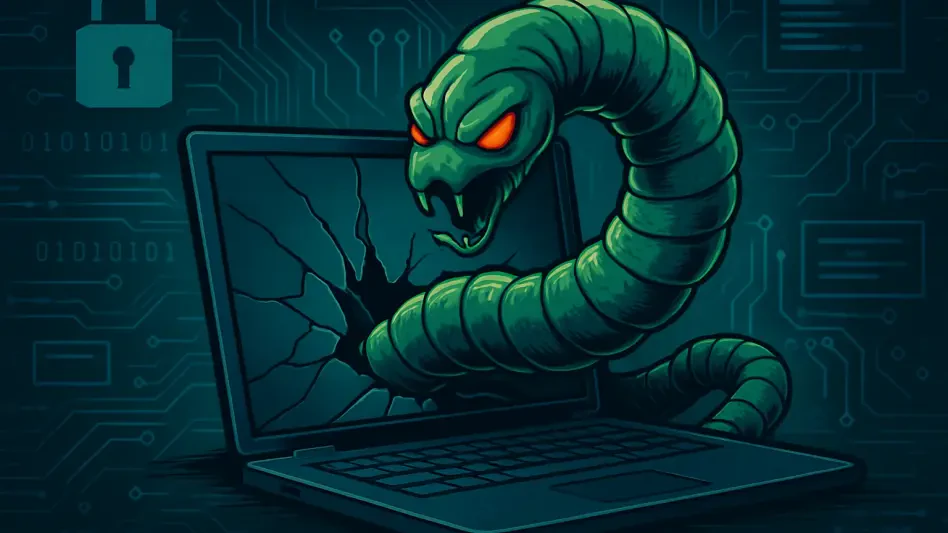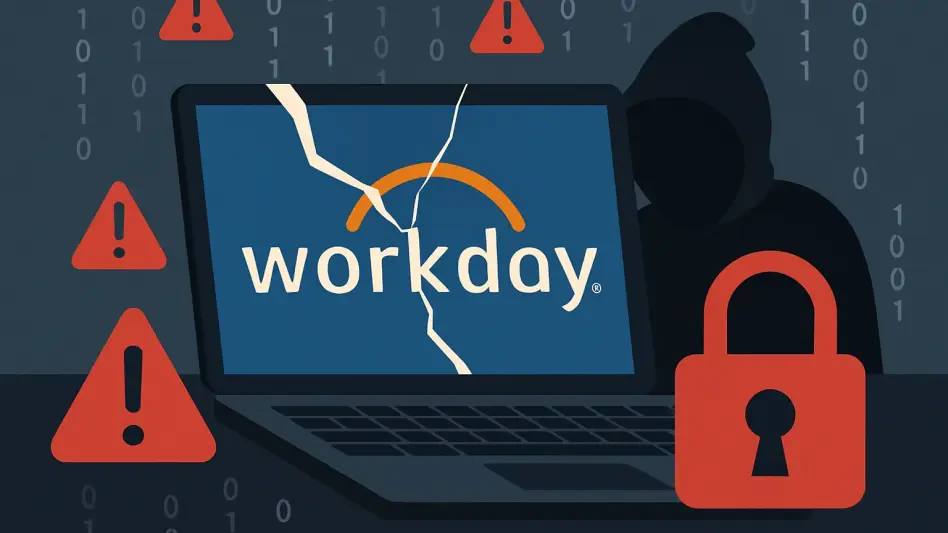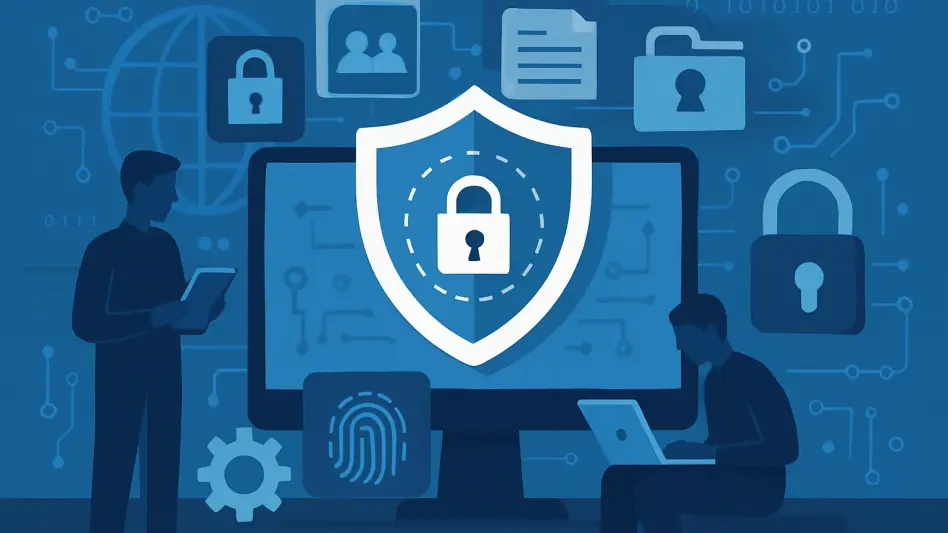In a landscape where cyber threats evolve at an unprecedented pace, small and medium-sized businesses (SMBs) in the UK are grappling with a deepening security crisis that threatens their very survival. A recent report released on August 4, 2025, paints a stark picture of the challenges these organizations face, highlighting a significant disconnect between the expectations placed on security teams and the tools at their disposal. With budgets shrinking by an average of 16.6% and cyber alerts surging by 7% year-over-year, SMBs are increasingly vulnerable to sophisticated attacks that exploit technological and human weaknesses. Visibility gaps in cloud systems, fragmented security architectures, and the persistent danger of insider threats compound the problem, leaving already overstretched teams struggling to keep up. This alarming situation underscores the urgent need for strategic changes in how these businesses approach cybersecurity, as outdated methods and reactive responses are no longer sufficient to protect against modern threats.
1. Unpacking the Widening Security Gap
The growing divide between what UK SMBs are expected to secure and what their current capabilities allow is a central concern in the latest findings. Many organizations operate with tools that fail to address the speed and complexity of today’s cyber threats, leaving critical vulnerabilities exposed. Attackers, leveraging automation and advanced technologies, exploit these weaknesses at scale, often outpacing the defenses of smaller businesses. A key issue lies in the shrinking financial resources allocated to security, which limits the ability to invest in updated solutions or expand team capacity. This budgetary constraint, combined with a relentless increase in alerts, creates an environment where teams are perpetually on the back foot, reacting to incidents rather than preventing them. The strategic risk posed by outdated, siloed tools cannot be overstated, as they hinder comprehensive visibility and coordinated response efforts, making it easier for threats to slip through the cracks unnoticed.
Compounding this challenge is the sheer volume of data and systems that SMBs must protect, often without the infrastructure to do so effectively. Cloud adoption has surged, yet many lack the mechanisms to monitor these environments continuously, resulting in dangerous blind spots. Similarly, disjointed security tools fail to provide a unified view of potential risks, leading to inefficiencies and missed warnings. Insider threats, whether from negligence or malice, further complicate the landscape, as internal controls remain weak in numerous organizations. The pressure on security teams to manage these multifaceted challenges with limited resources is immense, often resulting in overlooked vulnerabilities that attackers are quick to exploit. Addressing this gap requires more than incremental fixes; it demands a fundamental shift in how security is prioritized and implemented, moving away from fragmented approaches toward more integrated, resource-efficient strategies that can keep pace with evolving dangers.
2. Critical Threat Areas Undermining Defenses
Among the most pressing issues for UK SMBs are specific threat vectors that consistently breach defenses, with email attacks leading the charge. A staggering 36% of organizations have reported significant incidents originating from email, a rate nearly double what was observed four years ago. Despite ongoing investments in protective measures, legacy systems struggle to counter sophisticated phishing and malware campaigns, allowing breaches to occur with alarming frequency. Additionally, cloud security remains a major weak point, as 77% of SMBs lack continuous monitoring of cloud data and container risks. With critical operations increasingly hosted in cloud environments, these unaddressed gaps become prime targets for malicious actors seeking to exploit misconfigurations or unprotected data, often with devastating consequences for business continuity and customer trust.
Another growing concern is the risk posed by insiders, with 30% of data loss incidents traced back to employees, whether through accidental errors or intentional actions. Weak governance and insufficient internal safeguards exacerbate this problem, leaving organizations exposed to threats from within their own ranks. These three areas—email, cloud, and insider risks—represent the core vulnerabilities that SMBs must address urgently. Failure to do so not only increases the likelihood of breaches but also undermines confidence in their ability to safeguard sensitive information. Tackling these issues requires targeted investments in modern defenses, robust policies, and employee training to mitigate risks at every level. Without such measures, the foundation of trust and operational stability that SMBs rely on will continue to erode under the weight of preventable security failures.
3. The Human Cost of Constant Alerts
Beyond technological shortcomings, the toll on cybersecurity professionals within UK SMBs is a critical yet often overlooked aspect of the current crisis. Nearly half of these teams—43%—face disruptive middle-of-the-night alerts, which severely impact sleep patterns and contribute to heightened stress levels. This relentless barrage of notifications fosters a culture of burnout, as staff are forced into a perpetual state of crisis management rather than strategic prevention. The resulting fatigue not only diminishes individual performance but also jeopardizes the overall security posture of organizations, as exhausted teams are more prone to errors and oversight. This human element underscores that the challenge is not solely about tools but also about sustaining the workforce tasked with wielding them effectively.
Alert overload has created an environment where firefighting becomes the norm, draining resources and morale alike. The risk of losing skilled professionals to burnout is real, potentially deepening the existing skills shortage in the cybersecurity field. When capable individuals leave the industry due to unsustainable workloads, the gap in expertise widens, making it even harder for SMBs to defend against threats. Addressing this issue requires a shift in operational design, prioritizing workloads that account for human limitations and reduce unnecessary disruptions. By rethinking how alerts are managed and ensuring that teams are supported rather than overwhelmed, organizations can protect their most valuable asset—the people who stand on the front lines of cyber defense. Ignoring this human cost will only amplify the vulnerabilities that attackers are eager to exploit.
4. Embracing Simplicity in Security Architecture
Amid these challenges, a promising trend is emerging as over half of UK SMB security leaders move toward consolidating their security tools into integrated platforms. This shift aims to reduce noise from overlapping systems, eliminate redundancies, and enhance overall resilience by providing a clearer, more unified view of threats. Simplified architectures help cut through the clutter of excessive alerts and disjointed responses, enabling teams to focus on critical issues rather than being bogged down by inefficiencies. This approach is not just a technical adjustment but a strategic necessity, as it aligns limited resources with the most pressing needs, offering a path to stronger defenses without requiring vast additional investments in new tools or personnel.
Financial considerations further drive this push for streamlined solutions, as SMBs cannot afford the luxury of redundant tools or expensive integration projects. The emphasis is on platforms that deliver immediate value through simplicity and effective protection from the outset. By reducing complexity, organizations can allocate their budgets more effectively, focusing on solutions that address core vulnerabilities rather than spreading resources too thin across fragmented systems. This economic urgency highlights the need for cybersecurity spending to demonstrate tangible returns, ensuring that every dollar invested contributes directly to safeguarding operations. As this trend gains traction, it offers hope that SMBs can build more sustainable defenses capable of withstanding the evolving threat landscape without breaking the bank.
5. Strategic Steps to Build Cyber Resilience
To navigate the mounting challenges, a practical roadmap with five key priorities has been outlined for UK SMBs to strengthen their defenses. First, Streamline Security Systems by removing disjointed, overlapping tools to achieve unified visibility and faster threat response. Second, Implement Targeted Automation to tackle repetitive manual tasks and alleviate resource constraints, freeing up teams for higher-value work. Third, Strengthen Cloud Security Rules by going beyond basic monitoring to enforce proactive, automated security measures across cloud platforms. Fourth, Focus on Employee Well-Being by designing workloads to prioritize human needs over endless alerts, safeguarding teams from exhaustion. Finally, Make Smart Funding Choices by allocating budgets to initiatives with clear, measurable benefits, avoiding short-lived security fads that offer little long-term value.
These actionable steps provide a clear framework for SMBs to address both technological and human challenges in their cybersecurity efforts. By consolidating tools, organizations can eliminate inefficiencies and improve response times, while automation reduces the burden of routine tasks that drain limited resources. Proactive cloud policies ensure that vulnerabilities in critical systems are addressed before they can be exploited, and a focus on employee health prevents burnout from undermining defenses. Strategic investments, meanwhile, ensure that every resource is directed toward meaningful outcomes, maximizing impact. Together, these priorities offer a balanced approach to building resilience, recognizing that effective security is about aligning technology, people, and budgets in a way that supports long-term stability and growth in a threat-rich environment.
6. Charting a Path to Sustainable Protection
Reflecting on the insights shared, it becomes evident that the journey toward cyber resilience for UK SMBs demands a fundamental shift away from complexity and toward streamlined, effective solutions. The focus has shifted from accumulating more tools and alerts to adopting fewer, more powerful systems that provide clarity and control. Cybersecurity is redefined not as a mere survival mechanism but as a means to enable businesses to thrive amid persistent threats. Looking back, the emphasis has been placed on empowering organizations to protect their operations without being overwhelmed by the scale of the challenge. The path forward is clear: prioritize integration, safeguard human resources, and invest wisely.
Moving ahead, SMBs should consider adopting platforms that simplify security management while delivering robust protection from day one. Exploring partnerships with trusted providers who understand the unique needs of smaller businesses can accelerate this transition. Additionally, fostering a culture of continuous improvement through regular training and policy updates will ensure that defenses remain agile against emerging risks. By taking these steps, organizations can build a foundation of resilience that not only withstands current threats but also anticipates future challenges, securing their place in an increasingly digital world.








